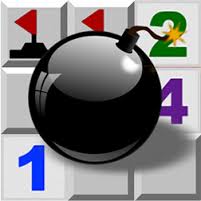
Homework 1:To do by September 19 The first h/w assignment is a sketch and a storyboard. We ask you to first sketch what your interface would look like. Then we want you to storyboard 4 interaction sequences. The first two should relate to the basic functionality described before. The remaining two should present functionality beyond the basic one. You can be as creative as you want them to be. Do not limit yourself to what you can actually code, you can consider a different input (e.g. voice), revealing additional information on the game (e.g. stats), other gaming contexts (e.g. collaborative), weird grids, annotations, ways to help users, etc. You need to give enough details in your storyboard so that it is clear how to use your techniques and their results. The storyboard can be done by sketching on paper, with pictures of paper prototypes, on Powerpoint, etc. You can include scanned sketches or any material you want, but please, include widely supported file formats (e.g., pdf, jpg, ppt, doc). Examples of interaction storyboards as sketches can be found here. If you want to learn more about storyboards than what we cover in class you can have a look here. Bring your paper version in class. Also create a compressed archive (zip or tar.gz) named firstname-lastname.zip or firstname-lastname.tar.gz that includes your storyboards, and email it to Anastasia and Stacy by Mon, September 19 at 23:00 the latest. Use the subject [ProgIS] Assignment 1 in your email. If you have a paper copy as well, bring it in class (we will return it to you). Homework 2: Version one to do by October 3, version two by Oct 24 The second h/w assignment (in two versions) is an implementation of your minesweerper. We expect you to implement the basic functionality described before. To get a good mark you need to go beyond this functionality and implement at least 2 extensions. We will judge your project based on the criteria mentioned above. In the first version of the minesweeper, we expect you to have built the window(s) you will need in your game, with their interface components layed out, and at least one type of interaction (it does not need to be the finalized one, e.g., clicking on a button gives you on the console some information about what is under the button). In the second version of the assignment, you need to hand-in the complete game, that includes all interface components and all interactions implemented. some advice Define the limits of your project before starting. Developing more functionalities will not necessarily give you a better mark (or a better product). Focus on aspects of the tool that conform to the described requirements. Your implementation should be usable. You should prevent users from reaching unexpected states in the system and provide feedback and feedforward mechanisms to avoid user errors. You are encouraged to be creative, but make sure what you decide to do is inside your competence level and abilities. If some aspects seem too hard, try to simplify things. Try to structure well and comment your code. Be ready to show your program running in class. Also create an archive (zip or tar.gz) named firstname-lastname.zip or firstname-lastname.tar.gz that includes: Email your compressed archive to Anastasia and Stacy by Tue October 3 and Monday Oct 24 at 23:00 the latest. Use the subject [ProgIS] Assignment 2 v1 or v2 in your email. Depending on time, you may be asked to give a brief presentation of your project, so make sure you have it handy.
what to submit

what to submit